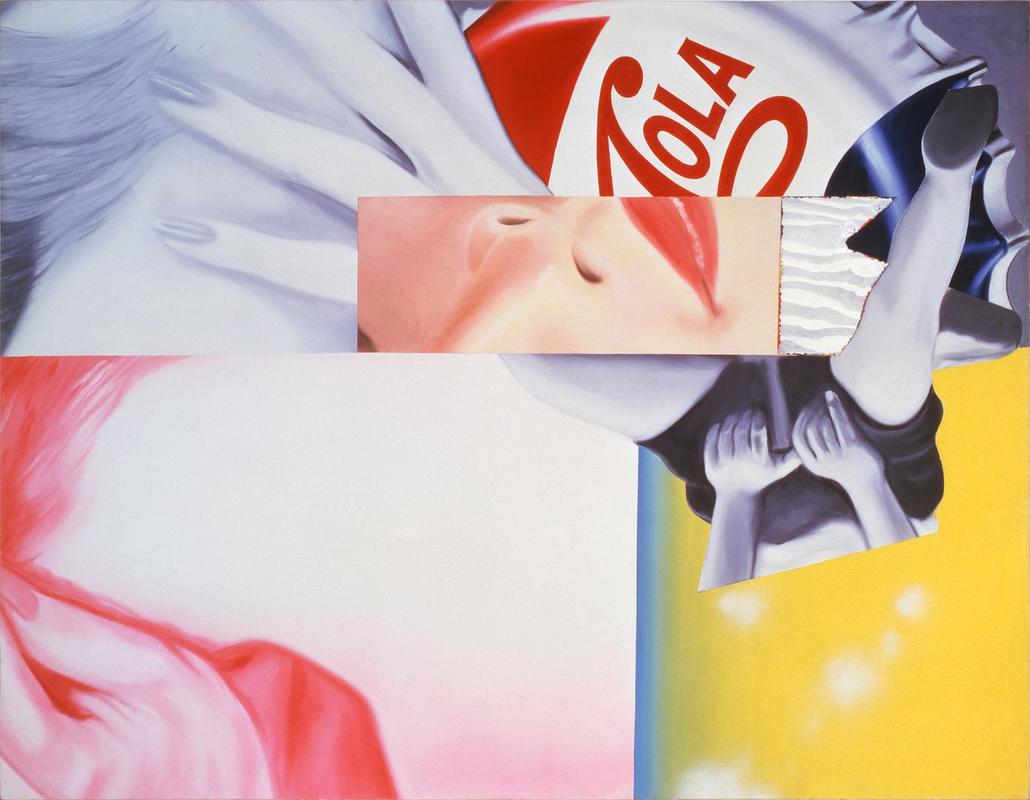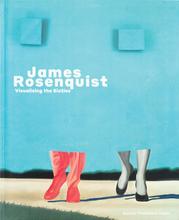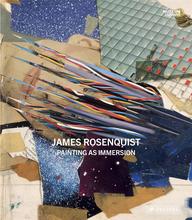More about Vestigial Appendage
- All
- Info
- Shop

Contributor
Look closely at Vestigial Appendage. What do you see in it? What message do you think the artist was trying to evoke?
Did you figure it out? Good, now don’t tell anyone, you don't know who you can trust.
See what you are looking at here isn’t just any work of art, it is a piece by James Rosenquist, a leading member of the Pop Art movement. He uses the same techniques used in advertisements drawn for major consumer goods of the '50’s, only he isn’t trying brainwash you into buying carbonated sugar water and starting a bottle cap collection. No, he is on our side, helping the little people in our fight against our oppressive corporate overlords.
I understand you might be skeptical, this image is a bit clean cut for a counterculture piece, but it's for good reason. Much like fellow Pop Art agent Andy Warhol, he got his start as an inside man. His first step into the art world was as a billboard painter. However, unlike Warhol who was also in advertising, Rosequist went a bit too deep. He spent quite a few years painting billboards in Manhattan and is quoted with saying “I got so I could paint a Schenley whiskey bottle in my sleep.” Luckily he came to his senses after a close friend slipped and fell to his death while painting. The experience prompted Rosenquist to quit his job and start making art directly for the cause.
Unfortunately though, the damage is done and Rosenquist's style is permanently adjusted towards the mainstream. All of his work has the same vibe as this piece and his 1961 work I Love You with My Ford. In fact, the commercial element runs so deep in Rosenquist’s art that many of his initial drafts are just collages made from magazine clippings. It’s not all bad, though. By using this mainstream style, Rosenquist and artists like Roy Lichtenstein subvert the meaning of commercial tropes. In essence, by being like the bad guys and using sex and Coca-Cola, Rosenquist is able to turn the brainwashing against the brainwashers.
Sources
- Pengelly Martin “James Rosenquist, pop artist who painted the famous F-111, dies aged 83” The Guardian 04/01/17 https://www.theguardian.com/artanddesign/2017/apr/01/james-rosenquist-p…
- Galerie Thaddaeus Ropac “JAMES ROSENQUIST | FOUR DECADES | Galerie Ropac | Paris Pantin | 2016” Youtube 10/01/16 https://www.youtube.com/watch?v=Ie_JZte4XhY
- Kimmelman Michael “ART VIEW; From Rosenquist, A Pleasing Look At Early Pop” The New York Times 1992 https://www.nytimes.com/1992/06/07/arts/art-view-from-rosenquist-a-plea…














